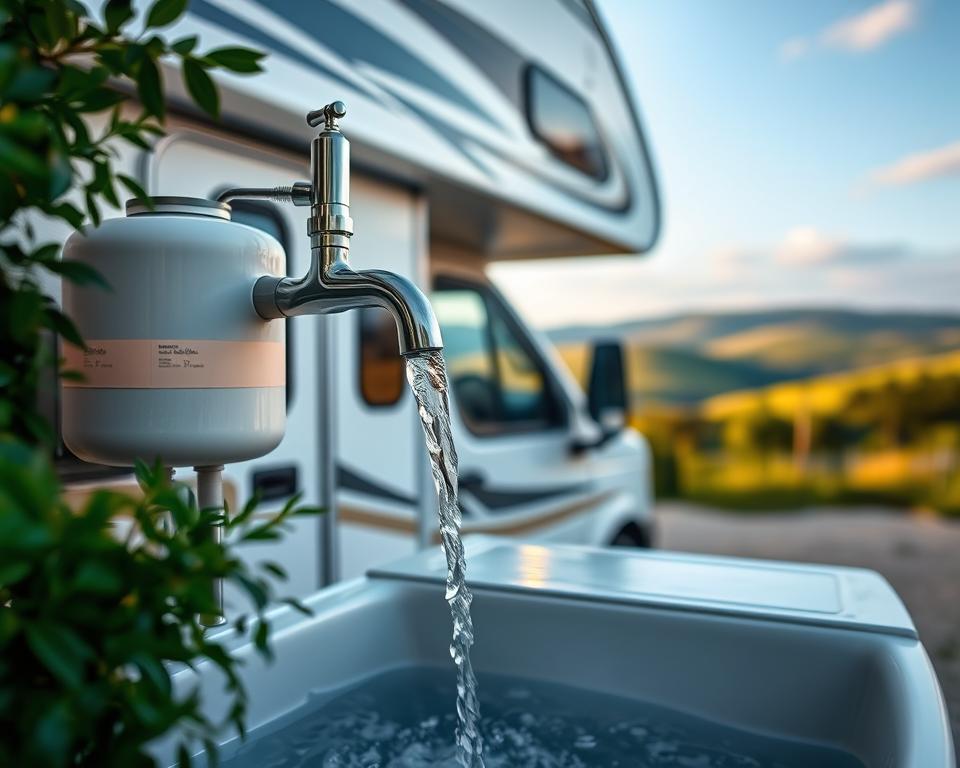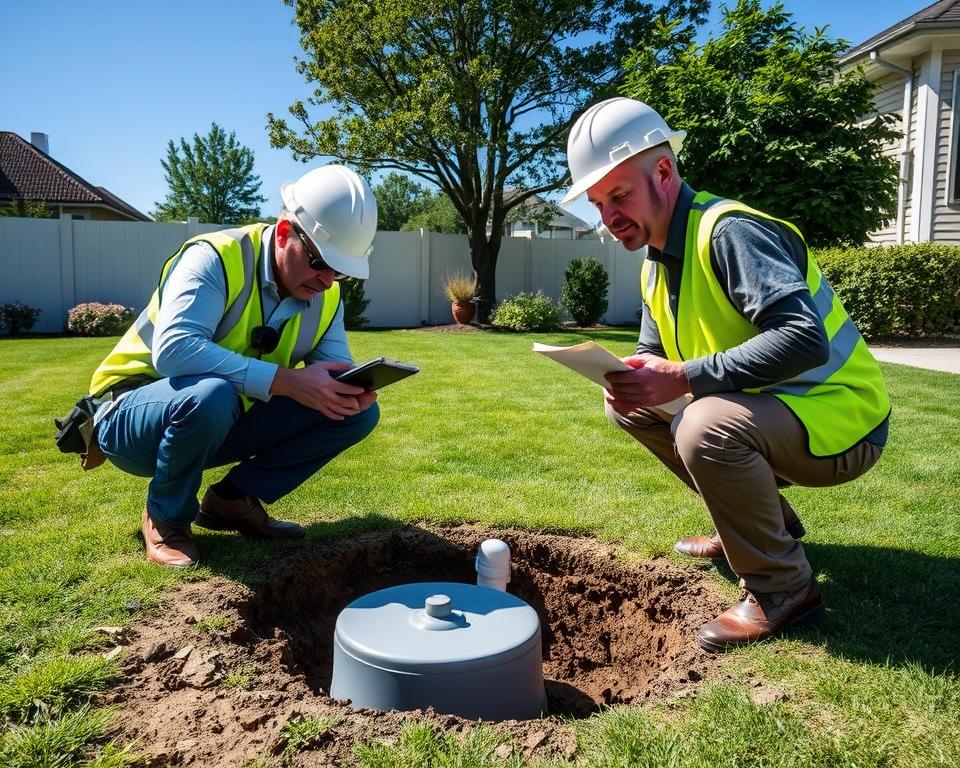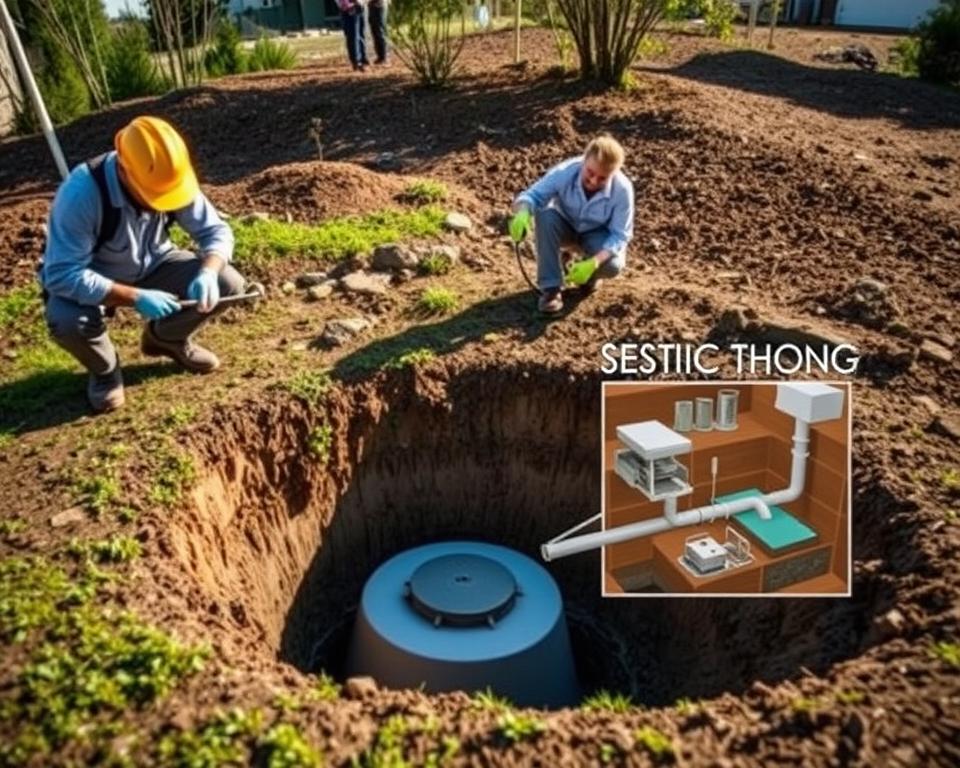RV Waste Tank Pumping: Vital Maintenance Advice
Consider the consequences of neglecting your RV’s septic system. Many RV owners find the idea of septic tank pumping daunting. However, understanding these upkeep steps is essential. These steps preserve your camping joy and avoid expensive repairs. Learning proper waste disposal is key to your septic health. We’ll share vital insights on RV water tank and pump, including best practices and tips to keep your system running smoothly.
Getting to Know Your RV’s Waste Setup
Every recreational vehicle features a septic setup. The system comprises a black water tank (toilet), a gray water tank (sinks/showers), and a fresh water tank. Knowing these components prevents clogs and ensures efficient cleaning.
Drains and vents manage liquid and air movement throughout the system. A good grasp prevents clogs and nasty odors. It’s the foundation of a smooth camping experience.
Maintaining clear, working tanks requires routine effort. Frequently checking tank levels and emptying on time preserves comfort. By maintaining your RV’s septic system properly, you’ll improve its lifespan and enjoy every trip more.
Importance of Regular RV Septic Tank Pumping
Frequent tank pumping keeps your system working and clean. Waste buildup triggers odors and backups that ruin outings. Overfilled tanks risk ugly overflows. Such mishaps kill the fun on the road.
Neglecting tank emptying invites expensive fixes. Damage from neglect can shorten component lifespan. Regular pumping ensures seamless operation. It prevents unwelcome surprises and roadside emergencies.
Staying on top of maintenance wards off backups. Investing in pump-outs shows you care about your RV. It greatly improves your travel experience. A strict pumping routine lets you enjoy camping without septic concerns.
Finding the Right Dump Frequency
Timing your tank dumps depends on several variables. Generally, dump every 3–5 days when in use. Still, it varies with tank size and occupancy. Pinpointing the correct dump time is key for effective wastewater management.
Empty once the black tank reaches roughly 66% full. This prevents solids from clogging and keeps flow steady. Skipping this leads to blockages and smells that spoil the trip.
Various factors influence dump frequency, such as
- Number of people on board
- Length of stay
- Type of waste generated
- Tank capacity
Planning is key to avoiding emergencies. Remember portable toilet service schedules. Tracking your usage helps forecast dump needs.
| Usage Scenario | Pumping Frequency |
|---|---|
| Weekend Getaway (2 people) | Every 3–4 days |
| Long Stay, Four to Six Occupants | Every 2–3 days |
| Seasonal Use, Two to Four Campers | Weekly or Bi-Weekly |
Keep a close eye on tank levels and your habits. Staying attentive guarantees a pleasant trip.

Proper Tank Dumping Techniques
Proper methods stop odors, clogs, and expensive repairs. Begin with the black tank to avoid cross-contamination. It keeps gray water from mixing with solids.
A sturdy sewer hose reduces spill chances and aids flow. Tighten connections to stop spills. Once both tanks are clear, rinse the black tank thoroughly. This removes residue and preps the tank for next time.
Know where dump stations are located. This preparation streamlines your dump routine.
To summarize, use these steps:
- Empty the black water tank first.
- Use a top-quality sewer hose.
- Flush the black tank thoroughly after emptying.
- Plan your dump station locations.
Following these guidelines simplifies black tank maintenance.
Proper Use and Maintenance of Your RV Tanks
Grasping correct handling of black and gray tanks ensures system health. Keep some water in the black tank for better breakdown.
Refrain from disposing non-biodegradable items. Use only RV-compatible paper. Regular checks spot leaks or cracks before they worsen.
Occasional treatments boost system performance. These products balance enzymes and bacteria for efficient decomposition. Such measures keep your tanks operating at their best.
- Check for leaks and damage often.
- Apply RV-specific chemical treatments.
- Keep vents clear to avoid odors.
Following these rules protects your septic setup. You’ll enjoy more worry-free trips.
How to Pump Efficiently
To pump your tank effectively, follow a methodical approach. Proper disposal prevents issues—only dump at approved stations. Understanding volume limits prevents spills on the go.
Check tank indicators regularly to time pump-outs. Routine scheduling preserves your septic system and travel enjoyment. A planned maintenance routine keeps everything running smoothly.
Flush well after every emptying. It ensures each dump is cleaner than the last. Such tactics keep your rig in top shape and improve your travel experiences.
Common Mistakes to Avoid When Maintaining Your RV Septic System
Maintaining your system is vital for uninterrupted camping. Insufficient flushing causes solids to accumulate. Adequate water use breaks down solids efficiently.
Flushing inappropriate items blocks pipes. Avoid non-dissolvable products like feminine hygiene items. Such mistakes can damage plumbing and inflate repair bills.
Leaving the black valve open too early is a mistake. Open valves let water out but hold solids, causing residue. Only open when ready to empty for a complete clean.
Awareness of these errors boosts system longevity. Steering clear of these mistakes ensures durable performance.
When to Seek Professional Septic Services
Recognizing the need for expert help extends tank life. Persistent odors often indicate complex issues. Tanks that empty sluggishly hint at internal blockages.
Visible residue at dump points requires attention. Such situations usually need high-pressure cleaning. Experts use specialized tools to clear stubborn clogs.
Routine professional inspections catch hidden issues early. Acting on findings quickly prevents bigger problems. Professional service ensures proper functionality.
Ongoing Septic Care Tips
Smart upkeep ensures lasting system performance. Scheduled dumps preserve longevity and operation. Routine rinses clear residue and stave off expensive breakdowns.
Adopting sanitation routines protects your system. Inspecting connections stops leaks before they spread. Choosing eco-friendly treatments avoids damage.
Consider these long-term practices:
- Stick to a pump-out timetable.
- Rinse often to remove solids.
- Sanitize twice a year.
- Inspect parts frequently for wear and tear.
Proactive care delivers worry-free travel. Through consistent upkeep, you’ll enjoy travel free from waste worries.
To Conclude
Good septic care ensures enjoyable trips. Understanding operation and following guidelines prevents headaches. Regular black tank maintenance improves efficiency. It enhances every mile.
By regularly checking and properly caring for your septic setup, you’ll ensure worry-free travel. Dependable sewage service backs every adventure. These routines prime your rig for future rides. So you can focus on making memories, not dealing with tanks.


